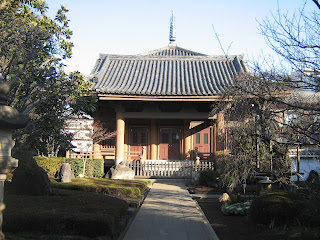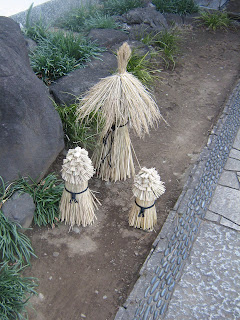A very interesting remark professor Ikegami makes concerning the universalization of religion is that praying for gense riyaku 現世利益 is often criticised when one is praying for personal benefits, but when one prays for others the criticism is not as harsh, even though the “others” often belong to one’s own environment.
The first book I analysed from the ones I borrowed from professor Ikegami is Shomin shinkō to gense riyaku. This book was written by Miyamoto Kesao, a well know scholar in the world of Japanese folkloristics who passed away a few years ago. In this book Miyamoto deals with a broad range of topics (Inari, the Seven Lucky Gods, Shugendō, house spirits etc.) all somehow connected to the acquisition of worldly benefits. Miyamoto emphasises in several instances that religion is often something mainly lived by a community (rather than a purely individual set of beliefs). Perhaps this is not only the case for Japanese religion: simply going to church, taking part in the ceremonies (baptism, communion,…) or processions may well have been more important for a lot of Europeans in the past than actual faith. About ancient Roman religion one could also say that the exact execution of a certain ritual was deemed far more important than being convinced of the existence of certain deities (perhaps this attitude was adopted by Roman-Catholicism?).
As folk religion is very diverse and varies greatly from one area to another and even from family to family research on this subject started off rather late and perhaps even too late (a lot of interesting practises have already disappeared), but Miyamoto states this diversity and unsystematic character is inherent to folk religion.
Terms like “superstition” and “Aberglaube” that clearly originated in Christian countries were translated into Japanese as meishin 迷信 and the condescending attitude towards certain religious behaviours that comes with this term penetrated Japanese culture according to Miyamoto. He, however, treats folkloristic creatures like Tengu, Kappa, Yashiki Warashi and the like as a proper part of religion, not as beings from fairy-tales. Here I should note that there may be a tendency of modern Japanese as well as Europeans to avoid using the word “religion” when it comes to certain concepts that often appear in popular culture, but do not require “faith” (as opposed to more stereotypical religious concepts), even though there is an unmistakable religious atmosphere surrounding them. One can often hear “Well, that is not really religion, it is just folklore” about things that are obviously religious. Perhaps the emphasis on faith within religion has led to a situation where these two words are considered to be identical. People who do not consider themselves to be “believers” are therefore less inclined to recognise important religious traditions, ceremonies that enhance the sense of community e.g. as being a part of religion.
I plan on reading more of Miyamoto's work as it provides not only an up-to-date basis on folkloristics, but also a great variety of concrete information and references to great folklorists from the past (like Yanagida Kunio 柳田国男).
- Ikegami, Yoshimasa (池上良正).『現世利益と世界宗教』(Gense riyaku to sekai shūkyō). Tokyo: Iwanami shoten (岩波書店), 2004.
- Miyato, Kesao (宮本袈裟雄). 『庶民信仰と現世利益』 (Shomin shinkō to gense riyaku). Tokyo: Tōkyō-dō shuppan (東京堂出版), 2003.



























